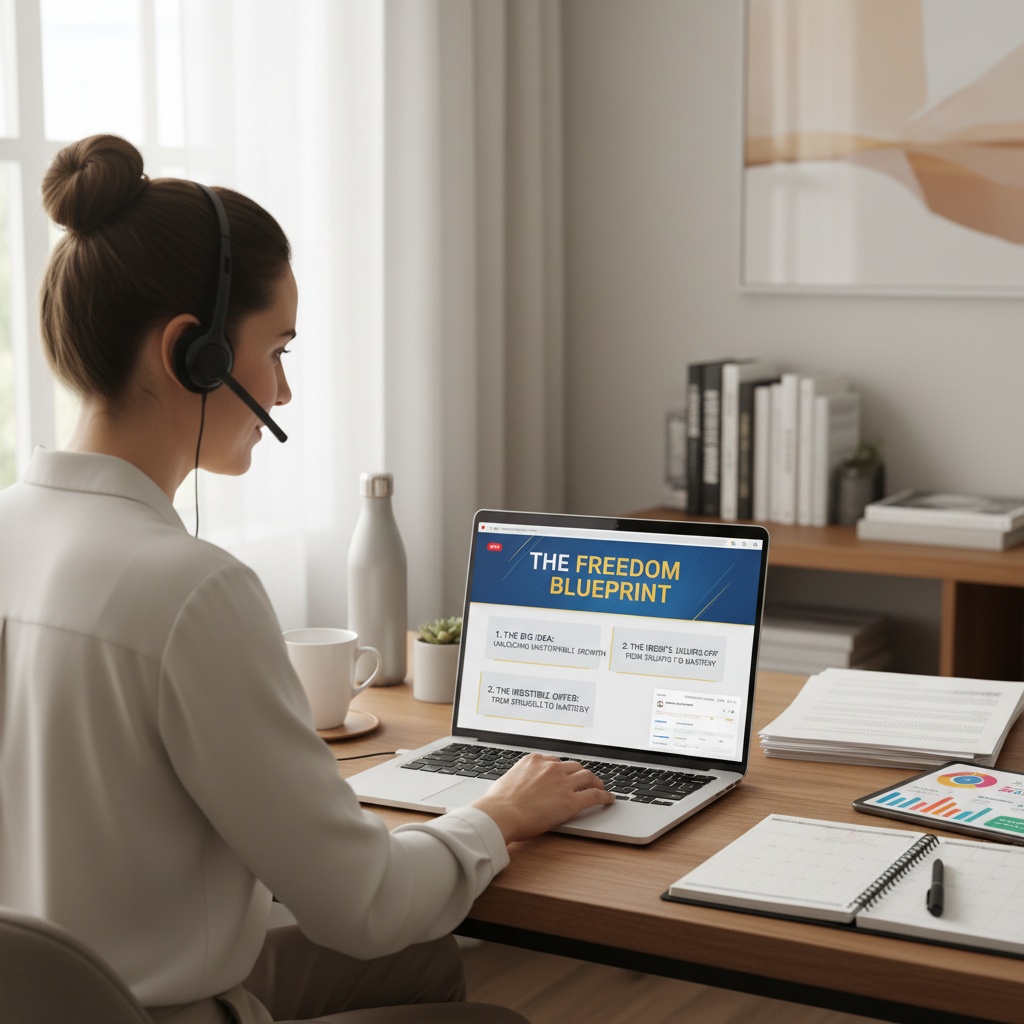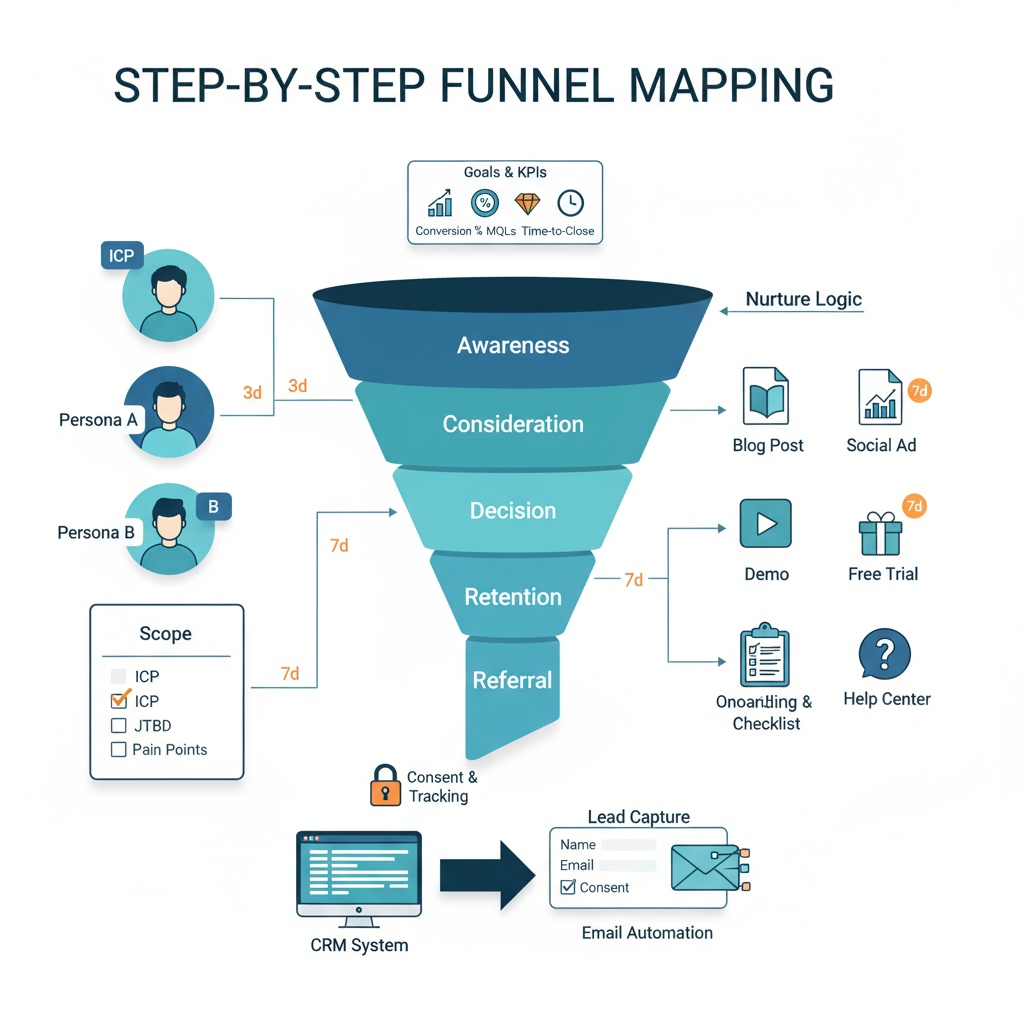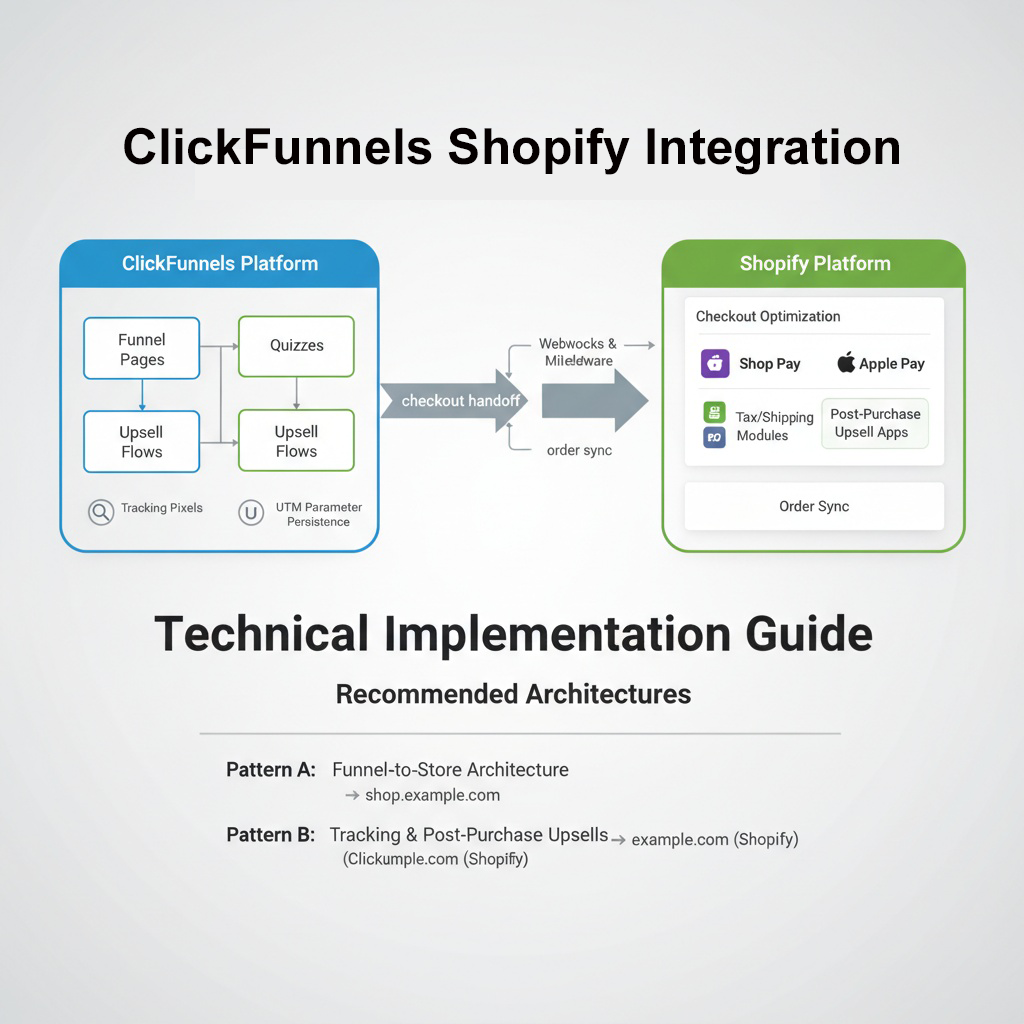Remote high ticket closing: a practical beginner’s guide to skills, frameworks, scripts, outreach, and performance metrics
Remote high ticket closing is the art and science of running virtual sales conversations—on Zoom or phone—that help qualified buyers commit to premium offers: consulting retainers, coaching programs, agency services, or high-ACV SaaS. Unlike hard-sell tactics, this is ethical, consultative selling: you diagnose, prescribe, and guide decisions without pressure or gimmicks.
If you’re a new closer, coach, consultant, or agency owner stepping into premium, transformation-focused deals, this guide gives you the essential playbook—skills, scripts, workflows, and numbers—so you can sell with confidence and measure your progress like a pro.
You’ll learn how to:
- Nail discovery, value articulation, objection handling, and decisive closes
- Use modern call frameworks, including a 1:1 adaptation of the Russell Brunson Perfect Webinar
- Personalize outreach scripts and daily operating cadences that book more qualified calls
- Track KPIs and apply simple sales forecasting methods to hit income targets predictably
Who this is for
- Beginners and early-stage closers moving into premium, ROI-driven offers
- Coaches, consultants, and agency owners selling on Zoom or phone
- Reps who want a repeatable process, clean pipeline hygiene, and clear next steps
Frameworks you’ll master (Russell Brunson Perfect Webinar, call skeletons)
- Big idea → origin story → belief shifts → offer stack → urgency, adapted to a live sales call
- Discovery-to-close skeleton: problem, impact, ROI, proof, plan, offer, close
- Supporting models: SPIN, GAP mapping, trial closes, agenda control
Scripts and tools (Funnel Scripts, CRM, scheduling, call review)
- Outreach: LinkedIn DMs and cold emails that open doors without pitching
- Appointment setting and discovery openers that surface budget, timeline, and buying process
- Tech stack basics: beginner-friendly CRM, Calendly, call recording, e-signature
Track what matters (sales forecasting methods, KPIs, pipeline)
- Activity and conversion: show rate, close rate, ACV, cycle length
- Forecasting you can do in a spreadsheet: stage-weighted, cohorts, rolling averages, and capacity models
- Pipeline coverage, aged deals, and quality checks that prevent you from chasing ghosts
We’ll start by defining remote high ticket closing, how it differs from appointment setting, and the ethics that keep your process compliant and client-first.
What Remote High Ticket Closing Really Involves
Remote high ticket closing is a video or phone led sales process for premium offers in the 2,000 to 50,000 plus range. You run discovery, present a tailored plan, and ask for commitment entirely online. Buyers are often founders, executives, and transformation-focused consumers who weigh ROI and risk carefully. Cycles can close in one decisive call when intent is high, or extend over a few weeks when multiple stakeholders must align.
Two roles frequently get mixed up. Appointment setters fill the calendar with qualified prospects. Closers lead the consultative conversation, align on outcomes, and finalize contracts. If you are moving into remote high ticket closing, you will own the diagnostic questions and the decision process, not just the booking.
Ethics anchor the craft. Secure informed consent to record, be transparent with claims, and never exaggerate outcomes. If you discuss financial results, ground them in evidence. Follow all industry regulations, and document agreements carefully. In premium sales, your integrity is part of the offer.
Key success factors:
- Offer to market fit and a clear, compelling promise
- Access to qualified leads from inbound, outbound, or partners
- A consistent, repeatable process for discovery and closing
- Discipline with notes, follow-ups, and documentation
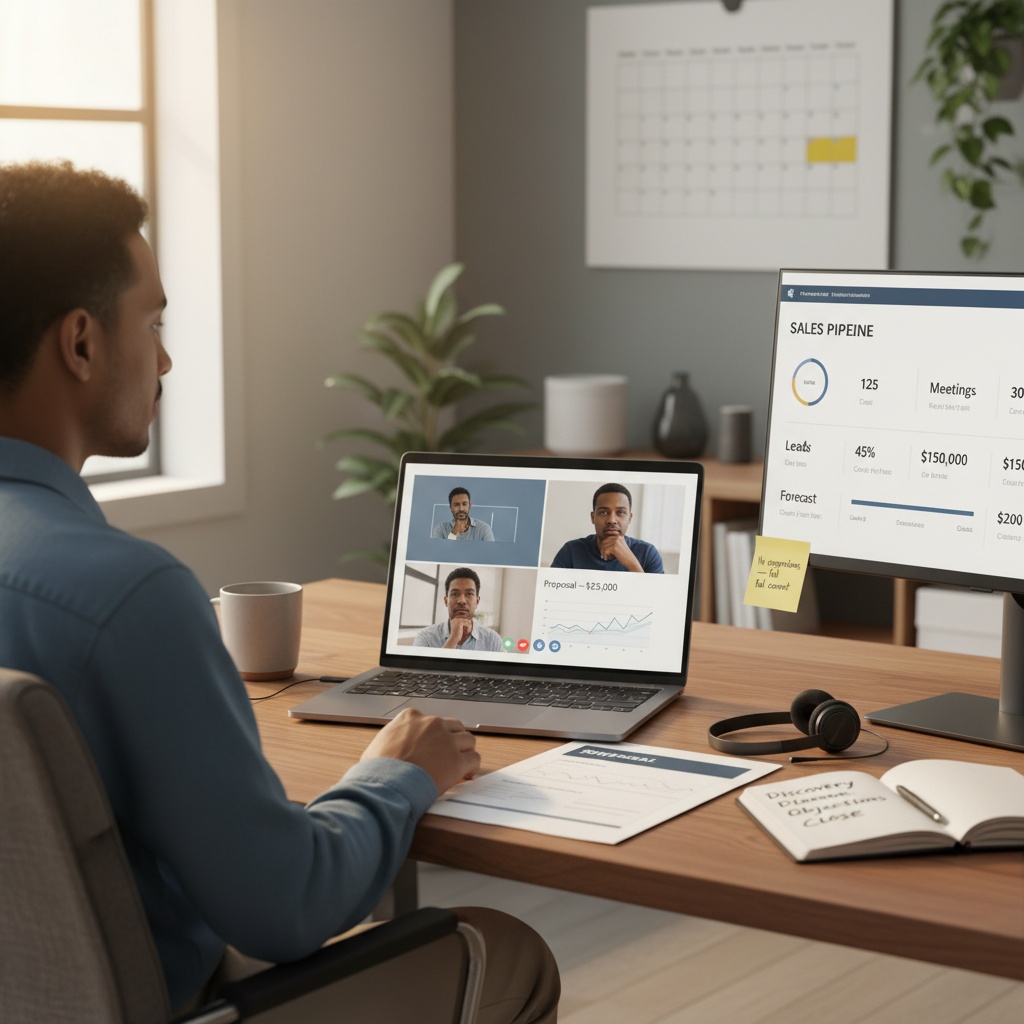 Appointment Setting vs Closing at a Glance
Appointment Setting vs Closing at a Glance
| Area | Appointment Setter | High-Ticket Closer |
|---|---|---|
| Primary goal | Book qualified meetings | Secure an informed yes or a clean no |
| Core actions | Research, pattern interrupt, qualify, schedule | Discovery, value articulation, objection handling, final terms |
| Success measure | Meetings held, show rate | Close rate, ACV, cycle length |
| Skill focus | List building, messaging, routing | Consultative diagnosis, negotiation, decision leadership |
Core Skills Every Remote High Ticket Closer Must Build
Mindset for premium remote deals
Adopt an outcomes-first lens. Your job is to help prospects achieve a defined result, even when that means recommending against a sale. Curiosity beats charisma. Take responsibility for the quality of your questions, the clarity of next steps, and the rigor of your follow-up.
Rapport and authority without small talk
Open with a concise agenda and consent to ask direct questions. Use credibility markers like relevant case outcomes, certifications, or years in a niche to establish expertise. Control the flow with time checks and transitions that keep the conversation on rails.
Discovery that uncovers money and meaning
Go beyond surface pain. Map the problem, the financial and emotional impact, the ideal outcome, the buying process, and budget realities. Use targeted prompts:
- What specific metric or milestone tells you this is fixed?
- If nothing changes in 90 days, what does that cost the business or your team?
- Who else weighs in and how do we involve them efficiently?
For deeper practice, see our guide on discovery calls for structure and question banks.
Value articulation that makes price a consequence
Translate features into business outcomes. Replace vague claims with proof and numbers. Share a concise story: the client’s starting point, the intervention, the measurable result. Where appropriate, include a basic financial justification that shows payback period or risk reduction, then invite the prospect to validate your assumptions.
Objection handling as collaborative risk management
Isolate the objection to ensure it is the real blocker. Label it without defensiveness, reframe with context, and present evidence. Use test closes to confirm progress.
- I hear that timing is your concern. If we resolved start date, is there anything else in the way?
- A client in your shoes cut churn by 22 percent within one quarter. If we model a conservative 10 percent for you, does the math hold?
For deeper tactics, study our objection handling playbook.
Closing mechanics that feel natural
Ask for the decision directly. Use clear commitment language, then outline next steps and ownership. Reduce friction by having contracts and payment logistics prepared on the call. Always recap agreed terms and confirm understanding.
Negotiation in premium contexts
Distinguish scope from price. Anchor on delivered value, not hourly activity. Use give-get: if you extend a concession, secure a reciprocal commitment like an accelerated start or case study permission. Protect margins by trading rather than discounting.
Remote presence on video and phone
Your voice, pacing, and visuals do heavy lifting. On Zoom, manage screen shares cleanly and keep slides minimal. Use camera framing and eye contact to build trust. On phone, vary tone and pace to keep attention, and narrate transitions so the prospect always knows where you are in the call.
Compliance, notes, and documentation
Record calls with explicit permission. Keep accurate notes tied to the CRM opportunity. Present disclaimers when needed, and ensure agreements capture scope, deliverables, and payment terms. This protects the client and you.
Tools and Assets to Start Fast
A lean stack helps beginners move quickly without complexity:
- CRM to track leads, stages, notes, and next steps. A spreadsheet works until you need automation.
- Scheduling links for frictionless booking and time zone handling.
- Call recording and review to build a feedback loop. Watch 15 minutes daily and capture one improvement.
- Script and copy tools. Draft talk tracks with Funnel Scripts, then personalize for your offer, niche, and proof points.
- Proposal and e-signature to reduce delays. Keep templates modular and easy to customize.
- A basic KPI sheet to track activity and conversion. You will expand this in later stages as you adopt formal sales forecasting methods.
Frameworks That Organize Your Remote High Ticket Closing Calls
Adapting the Russell Brunson Perfect Webinar for 1:1 calls
The classic structure works because it shifts beliefs and stacks value. For a live Zoom call, condense the arc:
- Hook and big idea tied to the prospect’s goal
- Short origin story to earn authority
- Three belief shifts: the vehicle, internal, and external false beliefs
- Offer stack that shows outcomes, deliverables, and bonuses
- Clear urgency that respects ethics
To study the format, review the Complete Guide to a high-converting webinar and the Perfect Webinar Secrets FAQs. You can also learn from practical breakdowns like this Russell Brunson Perfect Webinar script summary and a systems-based webinar strategy guide.
How to apply it live:
- Open with a crisp recap of the outcomes they want
- Use one “big domino” to address the core objection
- Present a simple plan with proof, then stack the offer
- Transition into the decision with a permission-based close
Discovery-to-close skeleton that prevents detours
Follow a clean sequence so you never skip what matters:
1) Problem and evidence
2) Impact on money, time, and risk
3) ROI or outcomes that matter to the buyer
4) Proof that mirrors their situation
5) Plan with milestones and ownership
6) Offer stack with value anchors
7) Close, handle the top objection, and set next steps
Complement this with SPIN questioning to deepen context, GAP mapping to visualize current vs desired state, and trial closes to test alignment.
Lead-to-Close Process You Can Use Today
Pre-call preparation
- Qualification with must-have criteria and red flags
- Light research on the buyer, company context, and timing
- A pre-call agenda email that sets expectations and requests decision criteria
- Case studies queued, pricing frameworks ready, and a quick tech check
Discovery call
- Open with time and agenda, and ask permission for direct questions
- Run deep discovery and quantify stakes
- Map buying process, decision makers, and timing to prevent stall-outs
Presentation
- Use a webinar-inspired narrative to reframe beliefs and bridge to your plan
- Stack deliverables and bonuses, and anchor value before revealing price
- Invite questions, then handle the core objection with proof that matches their context
Close
- Ask for the commitment and confirm alignment on scope and outcomes
- Review contract terms and logistics while momentum is high
Post-call follow-up
- Send a same-day summary, contract, and a payment link
- For stalled deals, schedule your next contact on the calendar while still on the call
This flow keeps the conversation ethical, structured, and focused on outcomes. It also creates clean data for the performance insights you will refine later.
Sample Scripts and Talk Tracks for Remote High Ticket Closing
LinkedIn cold DM
- Hi [Name], noticed your team is scaling [X]. Clients at your stage often hit [bottleneck]. Would a quick 12-minute call be useful to see what is working for them?
Cold email micro-ask
- Subject: Quick idea on [specific outcome]
- [Name], we helped [peer company] cut [metric] by [percent] within one quarter. If you want the 3-step outline, open to a 12-minute call next week?
Appointment setting call
- To respect your time, a couple of quick checks. What is the main outcome you want from improving [area]? Who else will weigh in if we find a fit?
Discovery openers
- What is the number one outcome you want in the next 90 days?
- If [problem] persists for another quarter, what changes in revenue, workload, or risk?
Presentation transitions
- With your permission, let me recap what I heard and show you a simple plan that targets those outcomes.
Offer language that anchors value
- Based on your target of [X], this plan adds [measurable outcome], which is why clients invest [price] and see payback in [timeframe]. Here is exactly what you get today.
Objection responses
- It sounds like timing is the main concern. If we schedule kickoff for [date], does anything else stand in the way?
- We helped a client in your position achieve [proof]. If we model half that result, does the investment still make sense?
Trial and final closes
- Based on what you have shared, would it make sense to move forward with option A or B?
- Are you comfortable if I send the agreement now and we lock your start date?
Re-engagement for no-shows
- Quick note: I prepared a 2-slide outline for [outcome]. Want me to resend and book a brief call to walk through it?
Use Funnel Scripts for first drafts, then refine with your voice, proof, and buyer language. Save your best lines in your CRM so they are easy to reuse and improve over time. As your pipeline grows, you will connect these conversations to structured pipeline management for cleaner handoffs and fewer stalls.
As you practice these foundations, the next step is building a daily operating cadence and a lightweight measurement rhythm that sets up accurate forecasting with practical sales forecasting methods you can run in a simple spreadsheet.
Operationalizing Outreach: A High-Output Cadence That Scales With You
Source-mapped prospecting you can repeat weekly
Treat every lead source like a different sport. Inbound, outbound, and partner referrals respond to distinct hooks, timing, and proof.
- Inbound from webinars and content: Speed wins. Aim for a sub-5-minute first response on form fills and a same-day follow-up to registrants who engaged but did not book. Use a short video recap and a single next step. If your inbound engine includes a weekly webinar built on the Russell Brunson perfect webinar arc, map a post-event workflow that routes hot attendees to calendar links within 10 minutes. Reference the big idea they heard and the specific false belief you dismantled.
- Outbound on LinkedIn and email: Precision over volume. Build micro-lists by industry, role, and trigger event. Start with 15 to 30 accounts per day, 3 to 5 touches per account over 14 days, and a single clear conversion goal, a discovery call. Personalize the opener using one relevant observation or insight. Use a 3-sentence email structure: context, credible insight, and a micro-ask.
- Partners and affiliates: Set explicit response SLAs and co-branded proof. Create a partner intake form that captures ICP, deal size, and urgency. Prioritize these referrals above cold outbound, and attach a success shareable like a 2-minute Loom audit personalized to the referred company.
Daily workflow blocks that protect your pipeline
Timeboxing beats good intentions. Lock these blocks on your calendar and defend them.
- Prospecting, 60 to 90 minutes: Build and verify new micro-lists. Draft first-touch messages. Keep your sending limits healthy by capping new domains to 100 to 150 emails per day and warming gradually. Rotate hooks and openings weekly, using a control and one variant.
- Follow-ups, 45 to 60 minutes: Multi-channel touches to existing sequences. Move engaged prospects into short-call offers. Always rewrite the second and third touches with a new angle or asset, not a reminder.
- Calls, 2 to 4 hours: Discovery and closes. Front-load these in the prospect’s time zone. Lock buffer time for notes so nothing gets lost between conversations.
- Admin, 30 minutes: CRM hygiene, next-step tasks, and pipeline stage updates. Enforce stage exit criteria to keep the forecast honest.
- Skills, 20 minutes: Daily role-play or call review. Clip two moments to improve tomorrow’s talk track. If you draft call skeletons with tools like Funnel Scripts, keep them as a baseline and iterate after reviews.
Fourteen-day multi-channel sequence with conversion hooks
Design the first two weeks to earn a response without pressure. Each touch delivers a new angle or asset.
- Day 0: LinkedIn view and follow. Email with a 3-sentence insight tied to a measurable outcome. Optional voicemail under 20 seconds with a single benefit and a question.
- Day 2: Connection request with a personalized line from their content or recent milestone. Send a one-screenshot teardown of a relevant funnel or ad.
- Day 4: Short email sharing a 90-second video audit and a single question about priority or timing.
- Day 6: Comment on their post. DM with a micro-case, one metric, and an invite to a 15-minute fit call.
- Day 8: Value asset delivery, such as a benchmark PDF or a calculator. Ask if the numbers reflect their current performance.
- Day 10: Light voicemail referencing the asset and a proposed slot. Email with two suggested times.
- Day 12: Social proof nudge. One paragraph that mirrors their situation and a specific result, plus a direct booking link.
- Day 14: Breakup note with a helpful resource. Offer to close the loop or keep the door open.
Kill the sequence the moment they engage. For inbound webinar registrants, compress the first three touches into 24 hours after the event and use language aligned to the offer stack they saw in the Russell Brunson perfect webinar format. To improve those messages, borrow headline formulas and objection handling lines from the frameworks in the Complete guide to running a high converting webinar and the Systeme.io webinar secrets overview.
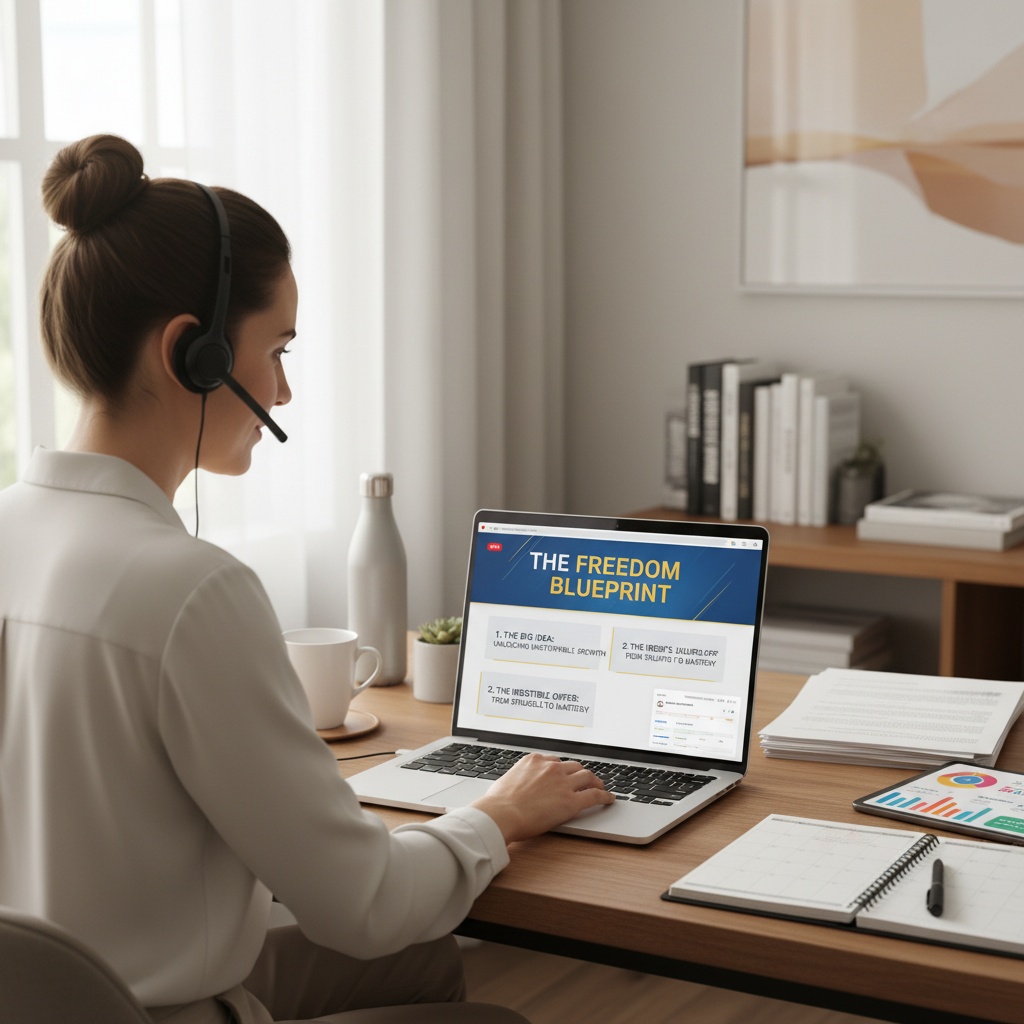
Pipeline governance and stage exit criteria you can audit
Define gates that prevent soft deals from contaminating your numbers.
- New: Lead record created with source and ICP tag. SLA to first touch within 5 minutes for inbound, 24 hours for outbound.
- Contacted: At least 2 touches delivered. Exit when you receive a reply or book a call.
- Qualified: Problem, person, and pay are verified. You have a clear use case, an engaged stakeholder, and budget range.
- Discovery Done: Full discovery captured, including goals, constraints, buying process, and timeline. Link call recording for later review.
- Proposal or Quote: Commercials sent, anchored to value and agreed scope. Next meeting scheduled to debrief the proposal.
- Verbal Commit: Confirmed start date, terms, and internal approval path. Objections isolated and addressed.
- Closed Won or Lost: Executed agreement and payment link processed for won. For lost, log a specific reason and whether to recycle later.
Cap stage aging. If a record sits 7 days in Contacted without response, move to a nurture list. If a proposal remains undecided beyond 14 days, trigger a reframe call rather than another email. Maintain pipeline coverage at least 3 times your monthly target within a 30-day close window, and prune anything outside the buying window.
Handoff that preserves momentum and promise
Create a mutual action plan during the close. Include dates, deliverables, owners, and success metrics captured during discovery calls. Schedule a kickoff within 48 hours. Pass the transcript, notes, acceptance criteria, and a summary of hidden risks to the delivery team. Reconfirm expectations and scope to reduce refunds and churn. If objections surfaced late, attach your final resolution and any concessions so the delivery team does not reopen negotiation. Document the value baseline so later outcomes can be attributed and referenced in objection handling with future prospects.
Instrumentation and Metrics That Drive Decisions
Activity and conversion targets by source
Track inputs and stage-by-stage movement rather than only closes.
- New contacts per day: 20 to 40 outbound, plus all inbound captured.
- Meetings booked: 10 to 20 percent of first touches for targeted outbound, 25 to 40 percent for warm inbound lists.
- Show rate: 40 to 60 percent outbound, 60 to 80 percent inbound. Tighten confirmation and reminders to move the needle.
- Close rate from first call: 10 to 20 percent outbound, 20 to 35 percent inbound depending on ACV and complexity.
- Cycle length: 7 to 21 days for simple services, 30 to 60 days for multi-stakeholder engagements.
Define your funnel math. If you need 6 wins per month at 5,000 ACV and your inbound close rate is 30 percent, you need 20 quality shows. With a 70 percent show rate, book 29 calls. Reverse those numbers into daily outreach volumes and calendar availability.
Efficiency economics you can influence
Measure the return on your time and cash.
- Revenue per call: Closed revenue divided by total calls. Improve by raising ACV, qualification standards, or presentation effectiveness.
- Revenue per hour: Include prep and admin time. Protect this metric with tighter agendas and faster follow-ups.
- Cost per acquisition: For paid leads, tie ad cost and content production to closed revenue. For outbound, assign a time cost and tool stack cost. If partner fees exist, treat them as part of CAC.
Quality control and compliance metrics
Healthy revenue is durable revenue.
- Call reviews per week: Minimum of three, tagged with themes to improve scripts and frameworks. Apply changes to the control script, then A or B test the revision.
- Compliance checks: Document disclaimers and claims. Maintain a checklist prior to sending proposals to avoid risky language.
- Refund and churn rates: Keep refunds below 5 percent for done-for-you services, churn below industry baseline for subscriptions. If these rise, trace back to promises made on calls and refine your proof points.
Pipeline health diagnostics
Weak pipelines look full and close thin. Use leading signals.
- Coverage ratio: Pipeline value within your 30-day window divided by target. Aim for 3 to 4 times. If much higher, your stage definitions are too loose or the window is unrealistic.
- Aged deals: Percentage of records past stage SLA. Over 20 percent indicates a follow-up or qualification issue.
- Source mix: Track win rate by source and ICP segment. Double down on sources with higher ACV and faster cycles.
Weekly review ritual and experimentation loop
Run a short operating cadence that forces decisions.
- Metrics huddle: 30 minutes to review activity, conversion, and aging. Drop or reframe deals that do not meet readiness criteria.
- Call calibration: Three clips. One discovery, one presentation, one objection. Log insights and update the talk track that same day.
- Script iteration: Establish a control script created from your best past performance. Use a variant built with frameworks or prompts from sources like the Perfect Webinar Secrets materials, then test over 100 touches to reach directional significance.
- Forecast alignment: Translate stage counts and probabilities into a stage-weighted number. Validate with a capacity model that multiplies weekly call capacity by show rate and close rate. Compare both to spot optimism bias.
Trends that affect outreach performance
Deliverability and attention constraints keep rising. Warm domains before sending. Set SPF, DKIM, and DMARC. Cap daily connection requests on LinkedIn and favor comments and content to earn warmer conversations. Short video audits outperform long decks. Buyers prefer asynchronous previews before committing to a full discovery call. Webinars remain efficient when the content follows a tight arc, which is why many teams adopt the Russell Brunson perfect webinar structure to feed higher quality calls into the queue.
Dashboards and field setup
Instrument your CRM to make measurement automatic.
- Mandatory fields: Source, ICP fit, buying role, next step date, stage, amount, close date, priority score, and risk flags.
- Calculated fields: Stage age, days since last touch, forecast category, probability, and expected revenue.
- Views and alerts: Today’s tasks, deals without next step, stale opportunities, and meetings without summaries attached. Use a spreadsheet mirror for a weekly snapshot and a simple stage-weighted forecast to stay aligned with your pipeline management process.
Carry these numbers into your chosen sales forecasting methods and let the data dictate your next outreach experiments.
Conclusion
Ultimately, remote high ticket closing becomes predictable when you treat it as a disciplined system: master the craft, run proven structures, tailor language to the buyer, execute a tight cadence, track the right numbers, and forecast with rigor.
The path is linear and repeatable. Start with skill—presence, discovery depth, value articulation, objection control, and decisive closes. Lock in structure with a 1:1 adaptation of the Russell Brunson perfect webinar and a discovery-to-close skeleton. Translate those frameworks into practical talk tracks and emails using funnel scripts that you then personalize through reps.
Operate like a pro. Follow a daily workflow that prioritizes prospecting, follow-up, live calls, clean CRM hygiene, and deliberate practice. Measure activity, conversion, efficiency, quality, and pipeline health so your dashboard tells a clear story every week.
Turn data into foresight. Use simple, spreadsheet-ready sales forecasting methods—stage-weighted, cohort, rolling averages, capacity, and scenario scenarios—to set targets you can hit and course-correct fast by reconciling forecast versus actual every week.
In conclusion, the evidence shows that consistent execution beats charisma. Implement the checklists today, schedule a standing weekly review, record every call, and refine your scripts from those recordings. Run the loop—skills → frameworks → scripts → workflow → measurement → forecasting—until it compounds. One disciplined improvement per call is the straightest line to reliable wins and durable revenue. Start now.

